By the way, did you guys catch 2 States in the movie hall yet? The main character - Krissh - seemed to be living in the Hauz Khas area - the one place I described very well in the first part of this two-post travel series. Also, finally I'm glad that Bollywood cleared the air about the people living in Tamil Nadu after the image they usually portrayed of them in movies like Singham and Chennai Express! All the locations in this movie were either my favorite or the most memorable of all places I've ever lived in! Delhi, Chennai and Mumbai.. aah nostalgia! This movie was already written in the form of a script, so there was nothing that could've gone wrong with the movie. Thank you 2 States, for reinstating the love for masala Bollywood movies all over again! Don't miss this, if you still haven't seen it in the theatres.
Anyway, enough stalling. Let's pick it up from where I left.After that train wreck of a journey with the seven gregarious girls from Indraprastha College at the North campus of Delhi University, I finally reached my hometown. In Jhansi, our house is as old as the Indian struggle for freedom. For some reason, my ancestors seem to have relocated themselves from the temple-city of Dakshineswar in Bengal to the heavily-fortified city of Jhansi sometime in the mid-19th century. They worked for the original rulers of the city but soon worked for the foreign rulers as well, after the revolt of 1857.Such historically linked that my home already is, I decided to spend some time there as my aunts mobilized their culinary forces in genuine efforts of fattening me up.After the most convivial Holi that I've ever taken part in, we planned a road trip to the nearby fort city of Orchha where we would usually wash away the colours from ourselves in the fast-flowing water of the Betwa river. Traditionally so. Now now, I know how this raises eyebrows of the environment-friendly lot among you readers. I just went with the flow this time as being mildly afraid of any significantly large pool of water, I've never done this earlier. Six of us on motorbikes, and one behind each of us - 12 guys in total - we rode at an average of 120 kmph on the highway in the obscure hinterland of the famous Chambal valley. There were jungles on both sides and occasionally you'll come across groups of rowdy biker gangs who will only pass by, shouting 'Holi hai!' all the way into the horizon that we were leaving behind.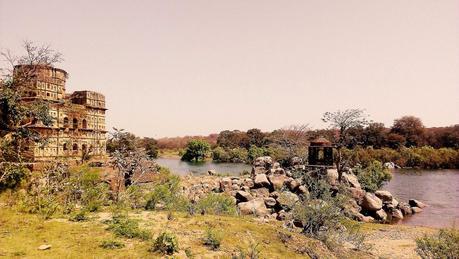
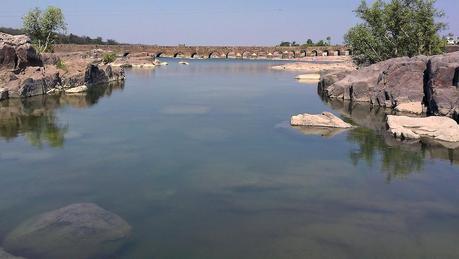

The groups of temples are clubbed in three geographical divisions - western, eastern and southern. The temples are made up of sandstone and I was told that mortar wasn't used to put them together. This particular fact amazed me as there they were, standing in whole, braving the test of time. I was told that Mortise and tenon joints have been employed (the kind of joints we see in the wooden furnitures at homes) with gravity being solely responsible for keeping them in place. Genius.
Although frequently singled out as the Kamasutra temple, the erotic sculptures do not really reflect various positions of sexual activity. Instead, the sculptures portray worldly desires. Most of the sculptures portray everyday life of people - women putting up make up, washing their hair, playing games and plucking thorns from their feet - then, there are deities, animals, portrayal of warfare and their victorious kings, and of people indulging in all kinds of sexual activities within themselves, alone and even with animals.I would suggest you take plenty of water so as to keep yourself hydrated, as the temperature becomes an apparent threat to one's life in the afternoon. Do not take unauthorized guides who ask you to pay them money, as you will find guides installed at each of the temples anyway. They are usually accustomed in great many languages and are personally trained by the Archeological and Tourism department of India. Avoid buying stuff from the market unless you're adept in bargaining. Obscenity is also a nuisance in Khajuraho as the people usually tend to point out the irony of one's trying to define a fine-line between acceptable erotic exhibitionism and plain obscene voyeurism at the very altar of supposed 'Kamasutra'!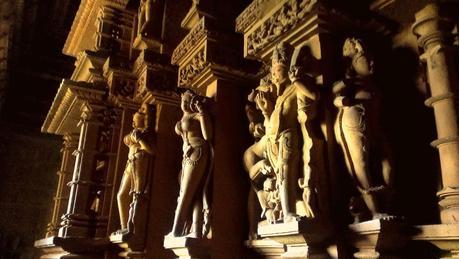
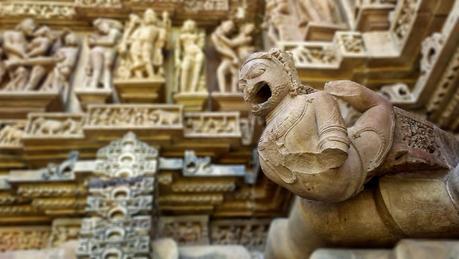
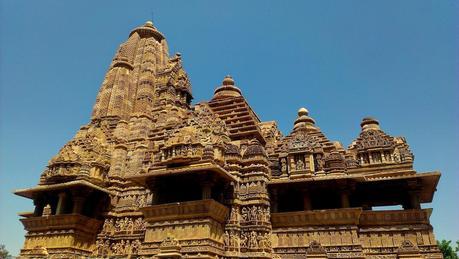
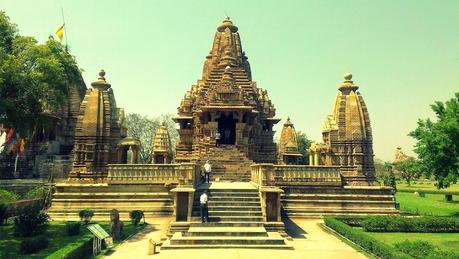
'Kaaye bai, mora des ke bahar jaariya he. Bata do ki mem-vem na le aaye?!'
Our son is leaving the country for higher studies, advise him not to bring home a foreigner bride?!
Bai thought about it for a really long time. We thought she couldn't hear him, which only saddened us and seemed to remind us of how old she really is! Then, she slowly spoke up after an extremely pensive pause,
'Beta, kachu itei ki aa jayegi, kachu utei ki aa jayegi.. je hi toh achhi hai nayi?' A bride from over here (aimed at my brother) and one from over there (reportedly, aimed at me) - what's wrong with that?!Of course, there's nothing wrong in that bai, thank you so much! Sugar, spice, everything nice and an especially amazing sense of humor - this is what Bai is made up of, alongwith so many years of human struggle and experience.After a while, Bai's daughter-in-law whom we call chachi, came over with her granddaughter in arms. Me and my cousin brother gasped! This baby's father, whose name was Kalu, was way too younger than us and her mother was perhaps half our age. When did he even get married? Knowing them, chachi's husband being a peon in the railways is enough information for anyone local to give their daughter away in marriage. It also meant that me and my cousins were now Jeths (brother-in-law) and Jethanis (sister-in-law) of their household and the great-uncles and aunts of an infant.
In all the shock that we were already in, my sister whispers in our ears from behind, "Kalu's lineage is hereby one up. So buck up, my dear brothers and get on with what needs to be done!"
